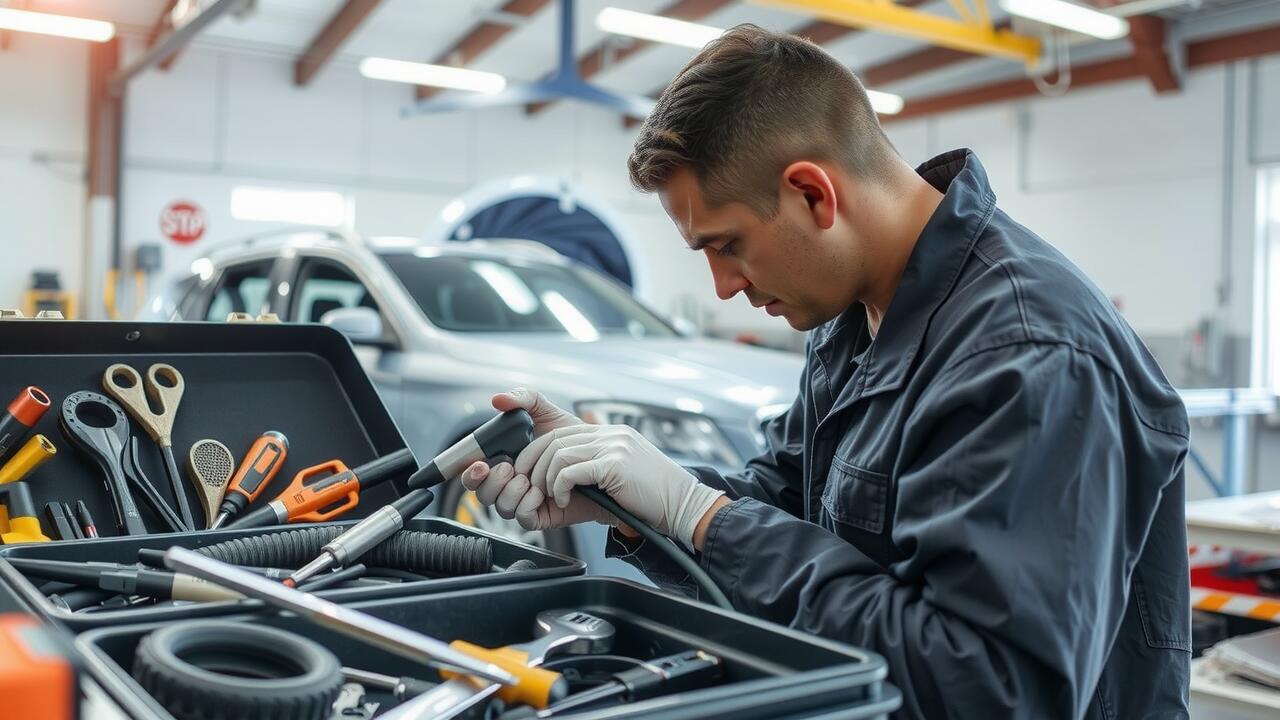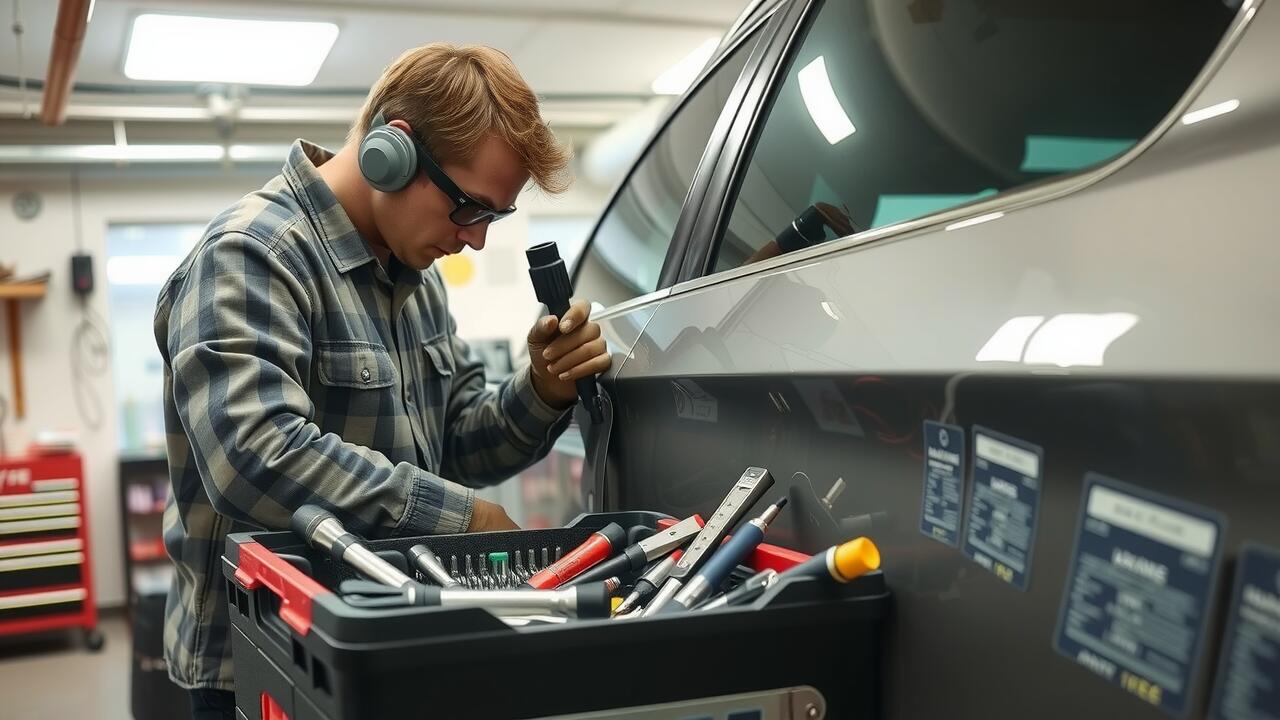
Limitations of Paintless Dent Repair
Paintless Dent Repair (PDR) is not suitable for every type of dent. Damage caused by sharp impacts or significant creasing may exceed the capabilities of PDR techniques. If the paint surface is compromised or cracked, traditional methods may be necessary to restore the vehicle's appearance properly. In cases where access to the back of the panel is limited, PDR may also be ineffective.
Furthermore, the effectiveness of Paintless Dent Repair relies heavily on the skill of the technician. An inexperienced technician might not achieve optimal results. Certain materials and vehicle designs may further complicate the PDR process. Not all dents can be removed flawlessly, and some may require touch-ups or additional cosmetic repairs.
Situations Where It May Not Be Applicable
Paintless Dent Repair is not suitable for every type of dent or damage. The technique is most effective for shallow dents that haven't compromised the paint surface. Dents caused by sharp objects or those that penetrate the paint often require alternative repair methods. If the metal has extreme creasing or is severely stretched, achieving satisfactory results with Paintless Dent Repair can be challenging.
Certain conditions also limit the use of Paintless Dent Repair. For example, if the vehicle's paint is chipped or cracked around the dent, this method may not be an option. In such cases, traditional repair methods that involve painting may be necessary to ensure the integrity and appearance of the vehicle. Additionally, older vehicles with more fragile paint might not respond well to the techniques used in Paintless Dent Repair, leading to potential further damage during the process.
Comparing Paintless Dent Repair with Traditional Methods
Paintless Dent Repair (PDR) offers a distinct approach compared to traditional methods of dent removal. While conventional techniques often involve sanding, filling, and repainting, PDR utilizes specialized tools to massage the dented panel back into its original shape without compromising the vehicle's finish. This method is typically quicker and can be more cost-effective since it eliminates the need for repainting and extensive labor time.
On the other hand, traditional repair methods might be necessary for larger or more complex dents that require structural realignment. PDR has limitations when it comes to paint damage or deep creases that compromise the integrity of the finish. Assessing the severity and location of a dent is crucial for choosing between Paintless Dent Repair and traditional methods to ensure the best outcome for vehicle restoration.
Key Differences Between Techniques
Paintless Dent Repair (PDR) primarily focuses on restoring the original contour of the metal without the need for filling or repainting. This technique involves the use of specialized tools that gently push or pull the dent from behind the panel, preserving the factory finish. Traditional dent repair methods often require sanding, applying body filler, and repainting the affected areas. This process can take significantly longer and may not always match the vehicle's original paint color perfectly.
Another notable difference lies in the cost-effectiveness and environmental impact of the two techniques. PDR typically offers a more affordable option, as it eliminates the need for paint materials and reduces labor time. In contrast, traditional repairs involve greater resource consumption and waste. Customers might also find that Paintless Dent Repair leads to increased resale value for their vehicle, as it maintains the original paintwork and structural integrity, a factor that potential buyers often consider.
Customer Experience with Paintless Dent Repair
Customer experiences with Paintless Dent Repair often highlight the convenience and efficiency of the process. Many customers appreciate the quick turnaround time, with most repairs completed within a few hours. The non-invasive nature of the service means that there is little disruption to their daily routine, allowing them to return to normal life without the hassle of lengthy traditional repair methods.
Reviews frequently mention the cost-effectiveness of Paintless Dent Repair compared to conventional fixes. Customers report satisfaction not just with the pricing but also with the quality of the repairs. The results often leave their vehicles looking as good as new, with no paintwork necessary. This has led to a growing number of positive testimonials, as many individuals feel that choosing Paintless Dent Repair has been a worthwhile investment for maintaining their vehicle's appearance.
Client Testimonials and Reviews
Customers often express satisfaction after experiencing Paintless Dent Repair. Many appreciate the quick turnaround time, noting that repairs can be completed in just a couple of hours. The convenience of not having to wait for traditional paintwork appeals to those with busy schedules. Reviewers frequently highlight the quality of the repair, emphasizing that the dents are often nearly invisible after the treatment.
Clients also commend the cost-effectiveness of Paintless Dent Repair compared to conventional methods. They mention that the pricing typically remains lower, making it a budget-friendly option for minor damages. Positive testimonials frequently cite the skilled technicians who perform the repairs, adding confidence to the overall experience. Overall, feedback indicates that many customers feel satisfied with the results they achieved through this innovative service.
FAQS
What is paintless dent repair (PDR)?
Paintless dent repair (PDR) is a technique used to remove minor dents and dings from a vehicle's body without the need for repainting or using fillers. It involves using specialized tools to manipulate the metal back into its original shape.
What are the limitations of paintless dent repair?
The limitations of paintless dent repair include its inapplicability to certain types of damage, such as deep dents, creases, or damage near the edges of panels. Additionally, PDR is not suitable for vehicles with painted surfaces that have chips or scratches.
How does paintless dent repair compare to traditional methods?
Paintless dent repair differs from traditional methods primarily in that it does not involve repainting, which can save time and preserve the vehicle’s original finish. Traditional methods often require extensive bodywork and repainting, which can be more expensive and time-consuming.
Is paintless dent repair worth the cost?
For minor dents and dings, paintless dent repair is often deemed worth the cost, as it is typically less expensive than traditional repair methods and can be completed quickly. However, its value can vary depending on the extent of the damage and individual circumstances.
What do customers think about their experience with paintless dent repair?
Customer experiences with paintless dent repair are generally positive, with many clients praising its efficiency, affordability, and effectiveness in restoring their vehicle’s appearance without affecting the original paint job.

